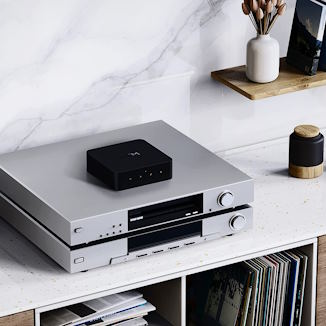In recent years, the marriage of artificial intelligence and audio-visual technology has marked a paradigm shift in how we engage with our entertainment setups. The integration of virtual assistants, such as Amazon’s Alexa, Google Assistant, or Apple’s Siri, with AV receivers has ushered in an era where our voice becomes the remote control for the home theater experience.
The Evolution of Virtual Assistants in the Consumer Electronics Landscape
In the fast-paced world of consumer electronics, virtual assistants have undergone a remarkable evolution. From their initial foray into our smartphones to now seamlessly integrating into our homes, these AI-powered companions have become pivotal in shaping the way we interact with technology. The journey from basic voice commands to nuanced conversational interfaces has not only made virtual assistants more intuitive but has also paved the way for their integration into sophisticated home entertainment systems.

Benefits of Using Virtual Assistants in Home Entertainment Systems:
The integration of virtual assistants with home entertainment systems brings a myriad of benefits. Foremost among them is the unparalleled convenience of hands-free control, allowing users to effortlessly manage their AV receivers, adjust audio settings, and even initiate content playback with simple voice commands. Beyond the convenience factor, virtual assistants contribute to a more immersive and personalized audio-visual experience. The ability to tailor preferences, create custom playlists, and seamlessly integrate with smart home devices amplifies the overall entertainment experience, transforming our living spaces into smart, responsive environments.
Popular Virtual Assistants Compatible with AV Receivers:
Leading the charge in the integration race are virtual assistants like Amazon’s Alexa, Google Assistant, and Apple’s Siri. These well-established AI platforms have not only become household names but have also emerged as key players in the home entertainment arena. Compatible with a wide range of AV receiver under $500, these virtual assistants empower users to control their audio-visual setups effortlessly. Whether it’s adjusting volume levels, switching between input sources, or initiating voice-activated content searches, the compatibility of these virtual assistants with AV receivers opens the door to a seamless, hands-free entertainment experience.
Assessing Compatibility between Virtual Assistants and AV Receiver Brands/Models
As the integration of virtual assistants with AV receivers gains momentum, ensuring compatibility becomes a pivotal consideration for users. Different virtual assistants may have varying degrees of integration with specific AV receiver brands and models. Before embarking on the integration journey, users should carefully assess the compatibility matrix, ensuring that their chosen virtual assistant seamlessly aligns with the capabilities of their AV receiver. This proactive step ensures a harmonious marriage of technologies, unlocking the full potential of a voice-controlled home entertainment experience.
Connectivity Options and Protocols for Smooth Integration:
 Smooth integration hinges on the robustness of connectivity options and protocols between virtual assistants and AV receivers. Understanding the communication channels and protocols is crucial for users aiming for a seamless experience. Whether it’s through Wi-Fi, Bluetooth, or proprietary protocols, the chosen connectivity method can impact the responsiveness and reliability of the integration. Exploring these options allows users to make informed decisions, tailoring the integration to their specific preferences and technical requirements.
Smooth integration hinges on the robustness of connectivity options and protocols between virtual assistants and AV receivers. Understanding the communication channels and protocols is crucial for users aiming for a seamless experience. Whether it’s through Wi-Fi, Bluetooth, or proprietary protocols, the chosen connectivity method can impact the responsiveness and reliability of the integration. Exploring these options allows users to make informed decisions, tailoring the integration to their specific preferences and technical requirements.
Troubleshooting Common Issues in the Integration Process:
Despite advancements, hiccups in the integration process may occur. Recognizing and troubleshooting common issues is vital for maintaining a frustration-free experience. From network connectivity problems to firmware mismatches, addressing these challenges head-on ensures that users can maximize the benefits of virtual assistant-AV receiver integration. Clear documentation from both virtual assistant and AV receiver manufacturers, coupled with online support communities, can serve as valuable resources for troubleshooting and resolving integration issues swiftly. Ultimately, understanding and navigating these compatibility and connectivity nuances contribute to a more enjoyable and hassle-free home entertainment experience.